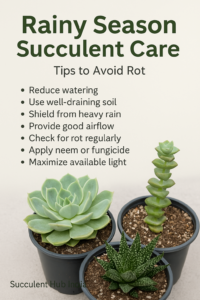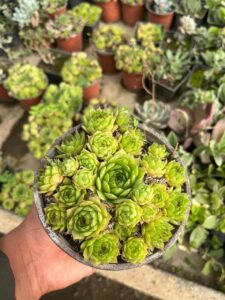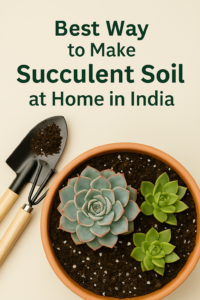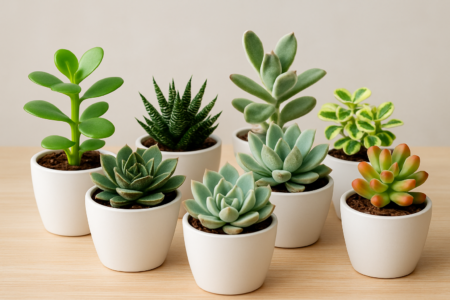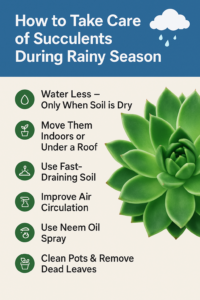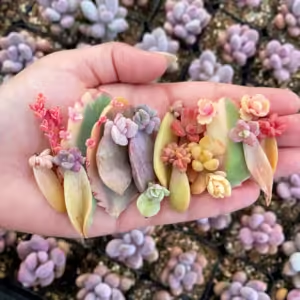
🌵 Are you ready to embark on a green journey but worried about your not-so-green thumb? Fear not! Succulents are here to rescue your plant parenting dreams. These charming, low-maintenance plants are the perfect gateway into the world of gardening, offering a delightful blend of beauty and resilience.
Imagine transforming your living space with an array of unique shapes, colors, and textures – all while barely lifting a finger. Succulents are not just plants; they’re living art that can thrive even under the care of the most forgetful or busy individuals. But with so many varieties available, where does a beginner start? And how can you ensure your new leafy friends not only survive but flourish?
In this guide, we’ll explore the best succulents for beginners, unveiling the top 5 easy-to-grow varieties that will kickstart your succulent journey. We’ll delve into essential care tips, highlight common pitfalls to avoid, and even show you how to multiply your collection through simple propagation methods. By the end, you’ll be ready to decorate your space with these hardy yet elegant plants, turning your home into a verdant oasis. Let’s dive into the wonderful world of succulents and discover why they’re the perfect choice for aspiring plant enthusiasts!
Why Succulents are Perfect for Beginners
Succulents have become increasingly popular among plant enthusiasts, and for good reason. These fascinating plants offer a perfect entry point for beginners in the world of gardening. Let’s explore why succulents are an ideal choice for novice plant parents.
A. Low maintenance requirements
One of the most appealing aspects of succulents is their minimal care needs. These hardy plants are:
- Drought-resistant
- Able to thrive with infrequent watering
- Resilient to neglect
This makes them perfect for busy individuals or those who may forget to water their plants regularly.
B. Variety of shapes and colors
Succulents come in an incredible array of forms and hues, offering something for every taste:
| Shape | Color Options |
|---|---|
| Rosettes | Green, pink, purple |
| Trailing | Blue, red, orange |
| Columnar | Yellow, white, variegated |
This diversity allows beginners to experiment with different aesthetics and create visually striking arrangements.
C. Adaptability to indoor environments
Succulents are excellent choices for indoor gardening due to their:
- Ability to thrive in low-light conditions
- Compact size, perfect for small spaces
- Tolerance for dry indoor air
These characteristics make them ideal for apartments, offices, or any indoor setting with limited natural light.
D. Drought tolerance
Perhaps the most beginner-friendly trait of succulents is their remarkable drought tolerance. This characteristic:
- Reduces the risk of overwatering, a common mistake among new plant owners
- Allows for flexible watering schedules
- Makes succulents suitable for water-conscious gardeners
With their forgiving nature and striking appearance, succulents provide an excellent starting point for those new to plant care. As we explore further, we’ll discover the top easy-to-grow succulents that are perfect for beginners.
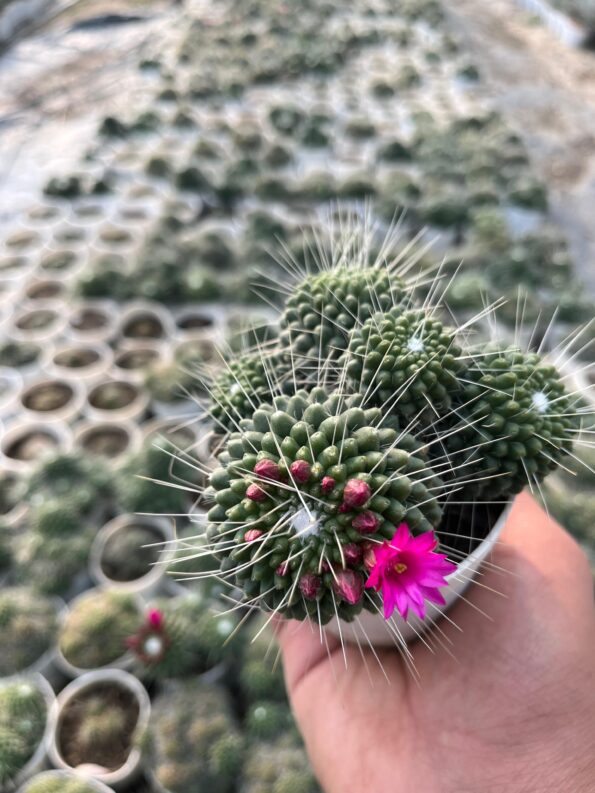
Top 5 Easy-to-Grow Succulents
Now that we understand why succulents are ideal for beginners, let’s explore five of the most beginner-friendly varieties. These succulents are not only easy to care for but also visually appealing, making them perfect for novice gardeners.
A. Sedum
Sedum, also known as stonecrop, is a diverse genus with over 400 species. Its low-maintenance nature and ability to thrive in various conditions make it an excellent choice for beginners.
- Characteristics: Fleshy leaves, star-shaped flowers
- Light requirements: Full sun to partial shade
- Watering needs: Low, tolerates drought well
B. Haworthia
Haworthia is a small, rosette-forming succulent that’s perfect for indoor growing. Its compact size and striking appearance make it a favorite among beginners.
- Characteristics: Pointed leaves, often with white stripes or patterns
- Light requirements: Bright, indirect light
- Watering needs: Moderate, allow soil to dry between waterings
C. Echeveria
Echeveria is known for its beautiful rosette shape and wide variety of colors. It’s a versatile succulent that’s easy to care for and propagate.
- Characteristics: Rosette form, wide range of colors
- Light requirements: Bright, indirect light to full sun
- Watering needs: Low, water when soil is completely dry
D. Jade Plant
The Jade Plant, or Crassula ovata, is a classic succulent known for its tree-like appearance and longevity. It’s often considered a symbol of good luck.
- Characteristics: Thick, woody stems and oval-shaped leaves
- Light requirements: Bright, indirect light
- Watering needs: Moderate, allow soil to dry between waterings
E. Aloe Vera
Aloe Vera is not only easy to grow but also offers medicinal benefits. Its gel-filled leaves can be used to soothe minor burns and skin irritations.
- Characteristics: Long, spiky leaves filled with gel
- Light requirements: Bright, indirect light
- Watering needs: Low, tolerates drought well
Here’s a comparison table of these five easy-to-grow succulents:
| Succulent | Light Needs | Water Needs | Special Features |
|---|---|---|---|
| Sedum | Full sun to partial shade | Low | Diverse genus, drought-tolerant |
| Haworthia | Bright, indirect light | Moderate | Compact size, striking patterns |
| Echeveria | Bright light to full sun | Low | Beautiful rosettes, varied colors |
| Jade Plant | Bright, indirect light | Moderate | Tree-like appearance, longevity |
| Aloe Vera | Bright, indirect light | Low | Medicinal properties |
With these five easy-to-grow succulents in your collection, you’re well on your way to becoming a successful succulent gardener. Next, we’ll delve into essential care tips to help you keep your new plants thriving.
Essential Care Tips for Novice Succulent Growers
Now that we’ve explored some of the best succulents for beginners, let’s dive into essential care tips to help you keep your new plants thriving.
A. Temperature and humidity considerations
Succulents generally prefer warm temperatures between 60-80°F (15-27°C). Most species can tolerate brief periods of cooler temperatures, but prolonged exposure to frost can be fatal. As for humidity, these desert plants prefer dry air, making them ideal for indoor environments.
B. Soil and potting requirements
| Requirement | Description |
|---|---|
| Soil type | Well-draining, sandy or gritty mix |
| Pot material | Terracotta or ceramic with drainage holes |
| Pot size | Slightly larger than the root ball |
Proper soil and potting are crucial for succulent health. Use a well-draining soil mix specifically designed for succulents or cacti. Avoid regular potting soil, as it retains too much moisture.
C. Optimal lighting conditions
Most succulents thrive in bright, indirect sunlight. Place them near a south-facing window for optimal growth. However, be cautious of intense afternoon sun, which can scorch leaves. Some key points to remember:
- Provide 6-8 hours of sunlight daily
- Rotate plants regularly for even growth
- Use sheer curtains to filter harsh direct sunlight
D. Proper watering techniques
Overwatering is the most common mistake in succulent care. Follow these tips for proper watering:
- Water thoroughly but infrequently
- Allow soil to dry completely between waterings
- Use the “soak and dry” method: water deeply until it drains from the bottom
- Reduce watering in winter when growth slows
Remember, it’s better to underwater than overwater succulents. These drought-tolerant plants can recover from underwatering more easily than from root rot caused by excess moisture.
With these essential care tips in mind, you’re well-equipped to nurture your succulents. Next, we’ll explore common mistakes to avoid, ensuring your plants remain healthy and vibrant.
Common Mistakes to Avoid
Now that you’re familiar with essential care tips, let’s explore some common pitfalls that novice succulent growers often encounter. By being aware of these mistakes, you can ensure your succulents thrive and flourish.
A. Ignoring pest infestations
One of the biggest mistakes beginners make is overlooking pest problems. Succulents can fall victim to various pests, including:
- Mealybugs
- Spider mites
- Scale insects
- Fungus gnats
Regular inspection is crucial. If you notice any signs of infestation, such as white fuzzy spots or webbing, take action immediately. Here’s a quick guide to dealing with common pests:
| Pest | Symptoms | Treatment |
|---|---|---|
| Mealybugs | White, cottony masses | Rubbing alcohol or neem oil |
| Spider mites | Fine webbing, stippled leaves | Insecticidal soap or neem oil |
| Scale insects | Brown, shell-like bumps | Manual removal, neem oil |
| Fungus gnats | Small flying insects | Allow soil to dry, use sticky traps |
B. Using the wrong soil type
Many beginners use regular potting soil, which retains too much moisture for succulents. Instead, opt for a well-draining cactus or succulent mix. You can also create your own by mixing:
- 2 parts potting soil
- 1 part perlite or pumice
- 1 part coarse sand
This mixture ensures proper drainage and prevents root rot, a common issue with succulents.
C. Insufficient light
Succulents are sun-loving plants, and inadequate light can lead to etiolation (stretching) and weak growth. Most succulents require:
- At least 6 hours of bright, indirect sunlight daily
- Gradual acclimation to direct sunlight to prevent sunburn
If you’re growing succulents indoors, place them near a south-facing window or consider using grow lights to supplement natural light.
D. Overwatering
Perhaps the most common mistake is overwatering. Succulents store water in their leaves and stems, making them drought-tolerant. To avoid overwatering:
- Water only when the soil is completely dry
- Use pots with drainage holes
- Water deeply but infrequently
- Reduce watering in winter when growth slows
Remember, it’s better to underwater than overwater succulents. They can recover from drought stress more easily than from root rot caused by excessive moisture.
By avoiding these common mistakes, you’ll be well on your way to becoming a successful succulent grower. Next, we’ll explore some simple propagation methods to expand your succulent collection.
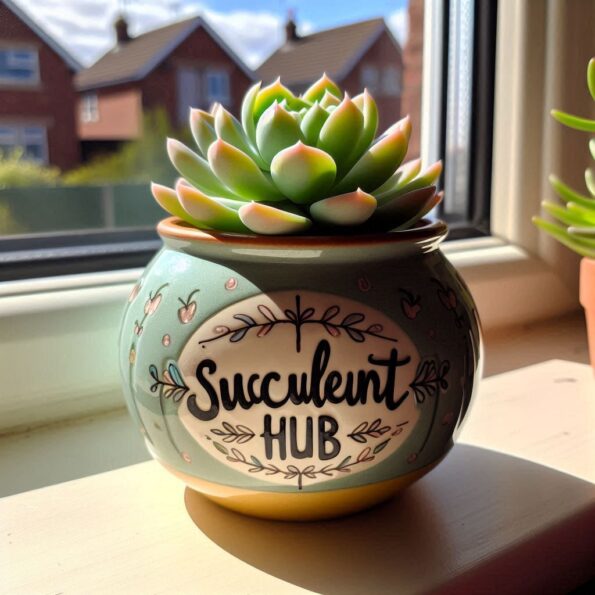
Propagation Methods for Beginners
Now that you’ve mastered the basics of succulent care, it’s time to explore the exciting world of propagation. This process allows you to create new plants from your existing ones, expanding your collection with minimal cost. Let’s dive into three simple propagation methods perfect for beginners.
A. Offsets or “pups”
Offsets, also known as “pups,” are small plants that grow from the base of the parent succulent. This method is nature’s way of propagation and requires minimal effort on your part.
- Wait until the pup is about 1/3 the size of the parent plant
- Gently remove the pup, ensuring it has some roots attached
- Plant the pup in well-draining soil
- Water sparingly until established
B. Stem cuttings
Stem cutting propagation is ideal for succulents with visible stems, such as jade plants or burro’s tail.
- Cut a 3-4 inch stem section using clean, sharp scissors
- Remove lower leaves, leaving 2-3 at the top
- Allow the cut end to callus for 1-2 days
- Plant the cutting in well-draining soil
- Water lightly and place in bright, indirect light
C. Leaf cuttings
Leaf propagation works well for succulents with plump leaves, like echeverias or sedums.
| Step | Action | Time |
|---|---|---|
| 1 | Gently twist a leaf from the stem | Immediate |
| 2 | Let the leaf callus | 2-3 days |
| 3 | Place on well-draining soil | After callusing |
| 4 | Mist occasionally | Every few days |
| 5 | Wait for roots and new growth | 2-3 weeks |
Each of these methods offers a unique way to multiply your succulent collection. As you become more comfortable with these techniques, you’ll find propagation to be a rewarding aspect of succulent care. Next, we’ll explore creative ways to showcase your growing succulent family through various decorating ideas.
Decorating with Succulents
Now that you’ve learned about growing and caring for succulents, let’s explore how to incorporate these beautiful plants into your home decor. Succulents are not only easy to maintain but also versatile in their aesthetic appeal, making them perfect for various decorative purposes.
Incorporating succulents in home decor
Succulents can add a touch of nature and elegance to any room. Here are some creative ways to use them:
- Place small potted succulents on windowsills or bookshelves
- Use larger succulents as statement pieces on coffee tables or side tables
- Create a succulent centerpiece for your dining table
- Hang succulent wreaths on doors or walls
Succulent arrangements for small spaces
Even if you have limited space, you can still enjoy the beauty of succulents. Consider these ideas:
- Mini succulent gardens in teacups or small bowls
- Succulent-filled picture frames to hang on walls
- Succulents in hanging planters to maximize vertical space
- Windowsill succulent gardens
Vertical succulent gardens
Vertical gardens are an excellent way to make a bold statement and maximize space. Here’s how to create one:
- Choose a sturdy frame or wall-mounted planter
- Select a variety of succulents with different colors and textures
- Plant succulents in a soil mix suitable for vertical growth
- Water carefully to avoid overwatering
Creating a succulent terrarium
Terrariums are self-contained ecosystems that make for stunning displays. Follow these steps to create your own:
| Step | Description |
|---|---|
| 1 | Choose a clear glass container |
| 2 | Add a layer of small rocks for drainage |
| 3 | Add activated charcoal to prevent mold |
| 4 | Add a layer of succulent-specific soil |
| 5 | Arrange your succulents |
| 6 | Add decorative elements like pebbles or figurines |
By incorporating succulents into your decor, you can bring a touch of nature indoors and create unique, low-maintenance displays that will impress your guests and brighten your living space.


